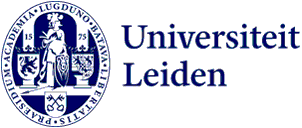
Let the robot lend a hand in the pharmacy (it’s more sustainable too)
Can a robot help prepare cancer medication in a hospital pharmacy? That’s what hospital pharmacist Tjerk Geersing investigated in his PhD research. He compared manual and automated preparations in terms of quality, efficiency, and safety. He graduated on 19 March.
In 2017, the pharmacy at OLVG hospital was the first in the Benelux to introduce a state-of-the-art robot capable of preparing medication. As part of his PhD, Geersing decided to evaluate this ‘new colleague’. How well does it perform when preparing chemotherapy drugs, which are later administered by nurses in the hospital or at patients’ homes?
Chemotherapy drugs are hazardous and must be prepared in the hospital pharmacy to protect staff. This process takes place in specially designed cleanrooms. ‘Because the medication is delivered directly into the bloodstream, you absolutely do not want any contaminants in it—especially for cancer patients. That’s why the preparation must be sterile,’ Geersing explains. A robot can meet these requirements just as well—if not better—than humans.
The robot is precise and efficient
Geersing and his colleagues focused on three aspects: product quality, time and cost efficiency, and safety. The APOTECAchemo robot performed well across the board: the prepared medication was just as precise and of the same high quality as manually prepared doses.
Although the robot takes slightly longer, it ultimately saves time thanks to the automated workflow. Additionally, fewer staff members are needed. Geersing explains: ‘Our calculations showed that with a combination of manual and robotic preparation, each staff member can produce twice as much, while direct labour costs are reduced by a factor of 2.5.’

Cheaper, fewer errors, and more environmentally friendly
In addition to being a time-saving colleague, the robot also makes medication preparation more sustainable. ‘The robot uses medicine vials more efficiently, reducing waste,’ says Geersing. He calculated that this could save an average of €45,000 per year per drug. The risk of human error is also reduced, as the process is automated. Moreover, less protective clothing is needed since fewer people are directly involved in the preparation process.
Updating regulations
Strict guidelines govern the preparation of medication, and the Dutch Health and Youth Care Inspectorate (IGJ) enforces these regulations. ‘The existing guidelines for manual preparation do not align with the possibilities of automation. The risk of errors and contamination is much lower with robots.’ Geersing is working with an expert group to update the current guidelines.
A future with robots
Will robots take over all manual preparations in hospital pharmacies? No, says Geersing. ‘Small volumes, thick liquids, and complex preparations still require manual work. Plus, a staff member will always be needed to load and unload materials from the robot.’
Still, Geersing envisions a future where every hospital pharmacy has a preparation robot. ‘If current trends continue, one in four people in the Netherlands will have to work in healthcare. With this robot, we can better manage the growing demand for care.’
PhD defence
Tjerk Geersing defended his thesis Robotic reconstitution of cytostatic drugs and monoclonal antibodies: transforming aseptic drug compounding in hospital pharmacies on 19 March. His supervisors were Catherijne Knibbe, Mirjam Crul and Eric Franssen.
